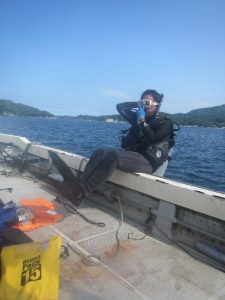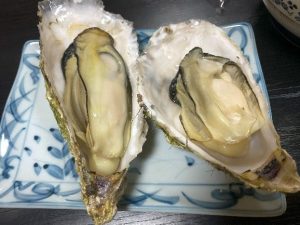Hello! I’m Mizuki Takahashi, a first-year master’s student. I would like to share the report of the field surveys conducted in Shizugawa Bay in July and August 2024. Continuing from the previous news, here is a report on the survey in Shizugawa Bay, but I expect to have more reports from more fields this year, so please look forward to it!
Hello! I’m Mizuki Takahashi, a first-year master’s student.
I would like to report on the Shizugawa Bay field survey conducted in July and August 2024. Continuing from the previous news, this is a survey report on Shizugawa Bay, but I think there will be more reports from the field this year, so please look forward to it!
This time, it was a joint survey with the University of the Ryukyus and Kurihara Lab, and Dr. Nakamura, Miyagi (M1), and Takahashi (M1) from Nakamura Lab participated. The main contents of the survey were water quality surveys in the bay and rivers, maintenance of sensors, and installation of ADCP (ultrasonic anemometers).
This was a joint survey with Kurihara Lab, University of the Ryukyus, and Nakamura sensei, Miyagi (M1), and Takahashi (M1) from Nakamura Lab participated. The main contents of the survey were water quality survey in the bay and rivers, maintenance of sensors, and installation of ADCPs (ultrasonic velocimeters).
・Water quality survey in bay and rivers
Water samples were collected and AAQ water quality surveys were conducted in the rivers flowing into Shizugawa Bay and in the bay. The collected water samples will be brought back to the lab for analysis of nutrients and other parameters. At the same time as water sampling, we measured the concentration of radon, a radioactive isotope, and attempted to estimate the amount of groundwater discharge.
In the rivers flowing into Shizugawa Bay and in the bay, we collected water and conducted water quality surveys using AAQ. The collected water samples will be taken back to the laboratory for analysis of nutrients. In addition, the concentration of radon, a radioactive isotope, was measured at the same time as water sampling to estimate the amount of groundwater seepage.
・Installation of ADCPs /ADCPのインストール
ADCP (Acoustic Doppler Current Profiler) is a current profiler that uses the Doppler effect of ultrasonic waves (the sound waves are reflected by suspended particles in the water and the frequency of the returned sound changes) to obtain multi-layered current profiles with a single unit. This data is used to validate the accuracy of the model being developed in the laboratory. Nakamura sensei dove down and set it up in the low water temperature. Thank you so much!!!
ADCP (Acoustic Doppler Current Profiler) is a current meter that can acquire a multi-layered flow velocity profile with a single unit by a measurement method that uses the Doppler effect of ultrasonic waves (the emitted sound waves are reflected by suspended objects in the water, causing a change in frequency in the returning sound). This data is used to verify the accuracy of the model being developed in the laboratory.
Even though it was summer, the water temperature was low, but Dr. Nakamura dived and installed it. Thank you!!!
And we too enjoyed the seafood from Shizugawa. We had heard rumors about it from our seniors, but it was so wonderful. I had heard rumors from my seniors, but it was wonderful.
The Shizugawa team will be back in a few months for another field survey. Next time it will be colder and seafood will be in season…. putting aside my feelings, we will continue our research even more!
The Shizugawa team will go to the field again in a few months. Next time, it will be a cold season, and 、、、 feeling that seafood is in season, I will continue to advance my research!
宿のKimi くん







